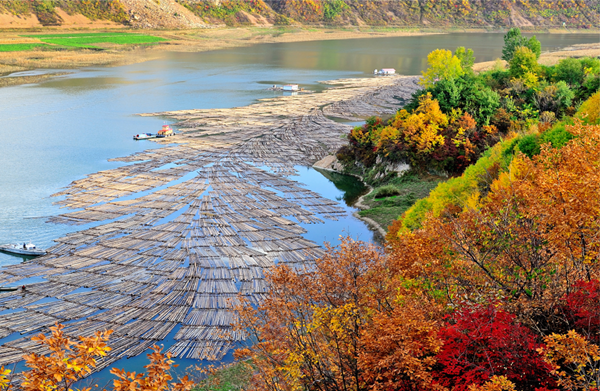
A massive raft of logs slowly makes its way down the Yalu River. [Photo/Baishan Tourism]
The tough loggers on the Yalu River, located in Northeast China's Jilin province, still engage in an ancient but perilous practice: transporting lumber down the Yalu River using rattan ropes, steel cables or iron chains to turn them into large log rafts that they then float down the waterway.
In ancient times, people living near the Yalu River and Hunjiang River used the waterways to send felled timber out of the Changbai Mountains, so the role of the Yalu River rafting loggers came into being.
At the end of the Qing Dynasty (1644-1911), the forest area of the Yalu River Basin was 3.59 million mu (239,067 hectares) and the storage capacity was 1.2 billion cubic meters.

Loggers tow a formidable raft of felled logs down the Yalu River. [Photo/Baishan Tourism]
Korean pine, white pine and larch that grow in the coniferous forests in the Yalu River Basin are good materials for construction, railway sleepers, papermaking and power utility poles. Basswood, poplar and birch in the area's hardwood forests are excellent for making furniture, gun stocks and boat oars.
At the present time, such abundant resources can only be transported down the Yalu River and the Hunjiang River.
In the past, Andong county (Dandong) was known as the "wood capital", where wood drifting from the upper reaches of the Yalu River was concentrated and then dispersed to other destinations, including overseas.
Yalu River log rafting not only reduces transport costs, but also eliminates the need to cut the logs for transportation, ensuring the integrity of the wood.

A glorious panorama of the wood being floated down the Yalu River. [Photo/Baishan Tourism]







